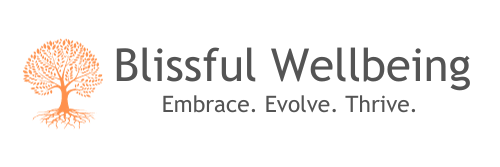
Welcome to our guide on how a mindfulness journal can transform your mindset. In today’s hectic world, finding moments of peace and clarity can feel like a challenge. That’s where mindfulness journals come in. But what exactly is a mindfulness journal? It’s more than just a diary—it’s a powerful tool for cultivating awareness, gratitude, and inner peace in your daily life.
So, what sets a mindfulness journal apart from a regular journal? While a regular journal may focus on recording events or venting emotions, a mindfulness journal goes deeper. It’s about tuning into the present moment, observing your thoughts and feelings without judgment, and nurturing a sense of mindfulness in your daily routine. By incorporating mindfulness practices into your journaling, you can tap into a wealth of benefits for your mental and emotional well-being.
10 Transformative Ways a Mindfulness Journal Rewires Your Mind
1. Enhancing Self-Awareness
Using a mindfulness journal is like shining a light on the inner workings of your mind. It’s a chance to observe your thoughts and emotions with curiosity and compassion. As you write in your journal, take note of any recurring patterns or themes. Are there certain situations that consistently trigger stress or anxiety? By identifying these patterns, you can begin to understand yourself on a deeper level and make conscious choices about how to respond to life’s challenges.
Table of Contents
Toggle2. Promoting Gratitude and Positivity
One of the most powerful practices you can incorporate into your mindfulness journal is gratitude. Each day, take a few moments to reflect on the things you’re thankful for. It could be as simple as a beautiful sunrise, a warm cup of tea, or a kind gesture from a friend. By focusing on the positive aspects of your life, you can shift your perspective from scarcity to abundance. Over time, this practice can cultivate a sense of joy and contentment that permeates every aspect of your life.
3. Managing Stress and Anxiety
Life is full of ups and downs, and stress is an inevitable part of the human experience. But how we respond to stress can make all the difference. In your mindfulness journal, explore different techniques for managing stress and anxiety. This could include mindfulness meditation, deep breathing exercises, or simply writing about your feelings. By developing a toolbox of coping strategies, you can navigate life’s challenges with greater ease and resilience.
These are just a few of the transformative ways that a mindfulness journal can rewire your mind. As you incorporate mindfulness practices into your journaling routine, you may find that your perspective shifts, your relationships deepen, and your overall well-being improves. So why not give it a try? Grab a journal, find a quiet space, and start exploring the power of mindfulness in your daily life.
4. Improving Focus and Concentration
In today’s fast-paced world, distractions abound, making it challenging to stay focused and productive. However, a mindfulness journal can serve as a powerful tool for enhancing focus and concentration. By engaging in mindful journaling practices, individuals can cultivate a present-moment awareness that allows them to fully immerse themselves in the task at hand.
Mindful journaling involves bringing conscious attention to the act of writing, noticing the sensations of pen meeting paper, and observing thoughts as they arise without judgment. This intentional focus on the present moment can help quiet the mind and reduce mental clutter, allowing for greater clarity and concentration.
Additionally, practicing mindfulness exercises alongside journaling can further sharpen concentration skills. Techniques such as mindful breathing, body scans, and sensory awareness exercises can help anchor the mind in the present moment, minimizing distractions and improving cognitive function.
Cultivating a present-moment awareness through mindfulness journaling can lead to increased productivity and efficiency in daily tasks. By training the mind to stay focused on the task at hand, individuals can optimize their performance and accomplish more with less effort.
5. Enhancing Emotional Regulation
Emotional regulation is a key component of mental well-being, and a mindfulness journal can be a valuable tool for developing this skill. By using the mindfulness journal to regulate emotions, individuals can gain greater insight into their emotional experiences and learn to respond to them in healthier ways.
One way to regulate emotions using a mindfulness journal is by writing about emotional experiences as they arise. By putting pen to paper and expressing feelings in a safe and non-judgmental space, individuals can process and understand their emotions more effectively. This process of emotional expression can help release pent-up feelings and prevent them from festering inside.
Furthermore, mindfulness journaling can aid in the development of resilience and emotional intelligence. By regularly engaging in reflective practices, individuals can become more attuned to their emotions and better equipped to navigate life’s ups and downs with grace and resilience. This increased emotional awareness allows individuals to respond to challenges with greater clarity and composure, rather than reacting impulsively out of emotion.
6. Cultivating Compassion and Empathy
Compassion and empathy are essential qualities for fostering meaningful connections with others, and a mindfulness journal can help cultivate these attributes. By engaging in compassionate self-reflection and empathy exercises, individuals can strengthen their capacity for understanding and connection.
In the mindfulness journal, individuals can engage in compassionate self-reflection by writing about their experiences with kindness and self-compassion. By offering themselves the same empathy and understanding they would extend to a friend in need, individuals can cultivate a deeper sense of self-love and acceptance.
Additionally, practicing loving-kindness meditation through journaling can further enhance feelings of compassion and empathy. This practice involves sending well-wishes and blessings to oneself and others, fostering a sense of interconnectedness and goodwill. By regularly engaging in loving-kindness meditation, individuals can cultivate a more open and compassionate heart, leading to more fulfilling relationships and a greater sense of belonging.
Furthermore, empathy exercises such as perspective-taking and active listening can be incorporated into the mindfulness journal to strengthen connections with others. By putting oneself in another’s shoes and truly listening to their experiences and emotions, individuals can deepen their understanding and foster greater empathy and compassion in their relationships.
7. Setting Intentions and Goals
Setting intentions and goals is a powerful way to align daily actions with long-term aspirations, and a mindfulness journal can help individuals stay focused and motivated on their path. By using the mindfulness journal for setting intentions, individuals can clarify their values and priorities and take intentional steps towards manifesting their dreams.
In the mindfulness journal, individuals can articulate their intentions by writing down specific goals and aspirations, along with actionable steps for achieving them. By regularly revisiting these intentions and reflecting on progress, individuals can stay focused and motivated on their journey towards success.
Furthermore, aligning daily actions with long-term goals can help individuals stay on track and make progress towards their aspirations. By breaking down larger goals into smaller, manageable tasks and scheduling them into their daily routine, individuals can ensure steady progress and celebrate achievements along the way.
Tracking progress and celebrating achievements is an essential aspect of goal-setting and can be facilitated through the mindfulness journal. By regularly reviewing progress and acknowledging successes, individuals can stay motivated and inspired to continue striving towards their dreams.
8. Improving Sleep Quality
Getting a good night’s sleep is crucial for overall well-being, and a mindfulness journal can help you achieve just that. By incorporating journaling into your bedtime routine, you can create a calming ritual that signals to your body and mind that it’s time to unwind. Use your journal to release worries and anxieties by jotting down any thoughts or concerns that may be keeping you awake. Additionally, practicing mindfulness techniques such as deep breathing or body scans before bed can promote relaxation and prepare your body for restful sleep.
9. Fostering Resilience and Well-being
Regular mindfulness journaling can contribute to building resilience and enhancing overall well-being. By reflecting on your thoughts and emotions in a non-judgmental way, you can develop a greater sense of self-awareness and emotional stability. Over time, this can lead to a heightened sense of inner peace and contentment, even in the face of challenges. As you continue to engage with your mindfulness journal, you’ll strengthen your mental resilience and cultivate a more positive outlook on life.
FAQs: Mindfulness Journal
1. What is a mindfulness journal, and how do you use it?
A mindfulness journal is a tool for self-reflection and awareness. To use it, simply set aside time each day to write about your thoughts, emotions, and experiences in a non-judgmental way.
2. How often should I journal in a mindfulness journal?
The frequency of journaling is up to you. Some people prefer to journal daily, while others may find it beneficial to journal a few times a week. Experiment to find what works best for you.
3. Can anyone benefit from using a mindfulness journal, or is it only for specific individuals?
Anyone can benefit from using a mindfulness journal, regardless of age or background. It’s a versatile tool that can help cultivate self-awareness and promote emotional well-being.
4. Are there any recommended mindfulness journal prompts or exercises?
There are many mindfulness journal prompts and exercises available online or in books. Some common prompts include gratitude lists, self-affirmations, and reflections on challenging situations.
5. How long does it take to see the benefits of mindfulness journaling?
The benefits of mindfulness journaling can vary from person to person. Some may notice improvements in mood and well-being quite quickly, while others may take longer to see significant changes. Consistency and patience are key.
Conclusion
In conclusion, a mindfulness journal is a powerful tool for transforming your mindset and enhancing your overall well-being. By incorporating mindfulness practices into your journaling routine, you can reap a multitude of benefits, from improving sleep quality to fostering resilience and emotional well-being.
Through mindful reflection and self-awareness, you can gain insights into your thoughts, emotions, and behaviors, leading to greater clarity and understanding. By cultivating gratitude and positivity, you can shift your perspective from scarcity to abundance, fostering a sense of joy and contentment in your daily life.
Moreover, by managing stress and anxiety through mindfulness journaling, you can develop resilience and coping strategies to navigate life’s challenges with grace and ease. And by setting intentions and goals, you can align your actions with your aspirations, staying focused and motivated on your journey towards success.
Incorporating a mindfulness journal into your daily routine is a simple yet profound way to rewire your mind and cultivate a deeper sense of presence, peace, and well-being. So why not start today? Grab a journal, set aside some time each day for reflection, and embark on a transformative journey of self-discovery and growth with your mindfulness journal.
Share This Post With Your Loved Ones!
Recent Articles:






